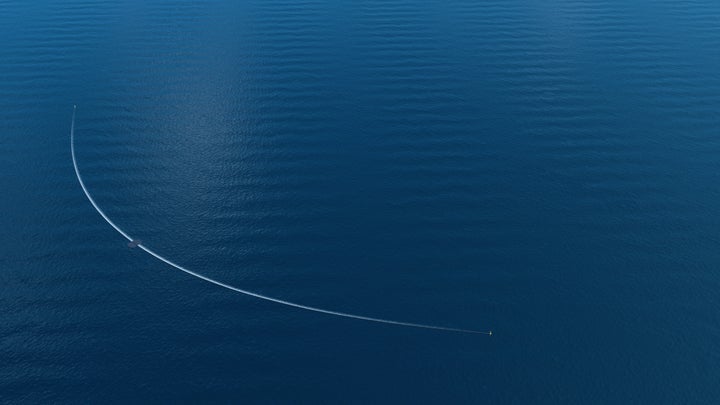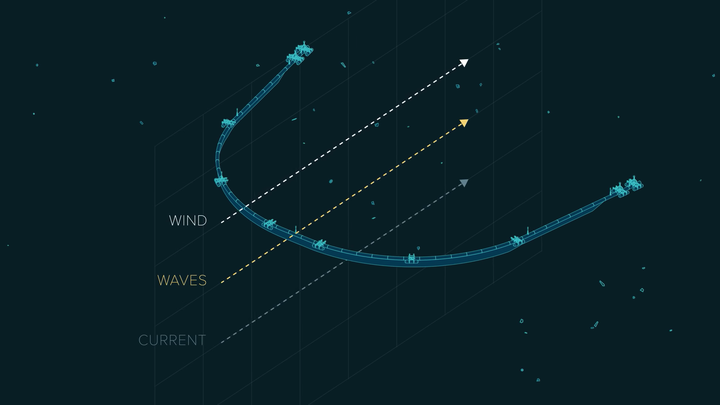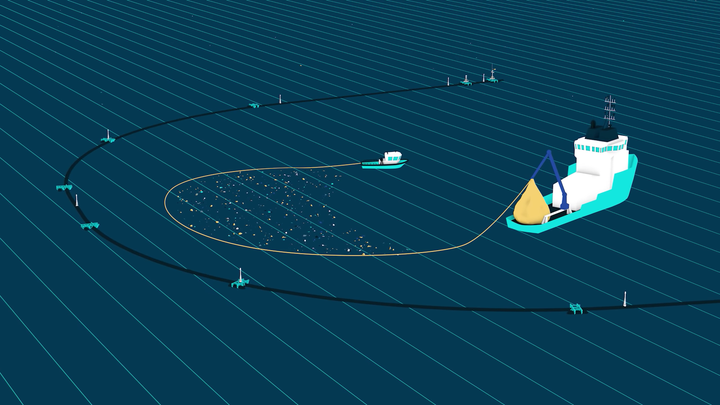A giant floating ‘Pac Man’ could finally be the solution to the vast islands of rubbish that are currently polluting our oceans.
The Ocean Cleanup project is the brainchild of 23-year-old dutch inventor Boyan Slat.
Originally unveiled as a concept, Slat’s incredible project has reached the final stage and the first fully-functioning boom will be sent out into the Pacific Ocean later this year.
Sent into the Pacific Ocean, these huge 600m long booms are steered by the natural currents of the ocean and the wind and it’s believed that a fleet of them could clean up half of the ‘Great Pacific Garbage Patch’ in just five years.

How does it work?
The genius behind Slat’s idea is its simplicity. The System 001 boom itself is a 600m long piece of large tubing which can gently bend. Beneath the tubing is a special skirt that’s around three meters deep in the centre and two meters deep at the edges.

This difference in length is what helps the boom gently curve into its ‘Pac Man’ shape as it’s driven by both the currents and the wind.
As most large plastic rubbish sits either on the surface or just below the boom doesn’t need a net. Also the use of a net would have presented the team with a pretty considerable challenge regarding sea life.
By following the currents the team can place the boom next to large concentrations of rubbish and then quite literally let nature do the rest. It’ll then move the boom faster than the plastic which in turn will result in the boom naturally collecting the rubbish inside it.

Thanks to an array of sensors on board the boom will know when it has reached full capacity at which point a message will be sent to a central office.
Once the message has been received a specialised cleanup vessel will go to the boom and collect the rubbish using a conventional net. The rubbish can then be taken back to shore for recycling and reuse.

Thanks to their passive nature, each boom is relatively low cost compared to the eye-watering estimates that had previously been put on the cost of cleaning up the oceans worst garbage spots.
Slat hopes to build around 60 of these booms which will stretch kilometres across the Pacific Ocean.
The first is expected to be launched later this year with further booms entering service throughout the next few years.
